We live in a world that celebrates the flawless. Photographs get Photoshopped. People head to the gym or start a diet. And that which is old or even a tad bit worn is thrown away (or at least hidden) and replaced.
Thankfully, in the midst of that madness lies a 400-year-old Japanese tradition called ‘Kintsugi’ in which broken pottery is put back together with gold. The idea is when using a precious metal to mend the flaws, the imperfections are not only celebrated, but the work becomes even more beautiful and strong.
While not Asian-themed, Brooks Harris Stevens’s textile art mimics that ancient practice by using gold thread to mend vintage fabrics, and it’s brilliant. Her stitched strands of gold indeed showcase how mending the ‘breaks’ and ‘scars’ of worn threads and fabric can lead to greater beauty and strength.
Brooks also knows there are many life lessons to be found in making the old new again, and she shares how her mending work has shaped her approach to living in a multicultural world. She also explains how her artistic journey has blossomed by opening the door when opportunity knocks.
This is a story of both technique and philosophy, and we’re confident you’ll find inspiration for your own work and journey.
Brooks is an artist and Professor at Eastern Michigan University where she has been the Fibers program coordinator in the School of Art & Design since 2007. She also lectures across the globe, and has been featured in many solo and group exhibitions. Brooks is continually inspired through creation of installations and three-dimensional fiber based work with interdisciplinary approaches challenging the fiber medium. She is currently creating new work for an upcoming solo exhibition at the Robert Hillestad Textiles Gallery at the University of Nebraska, Lincoln, in January 2021.
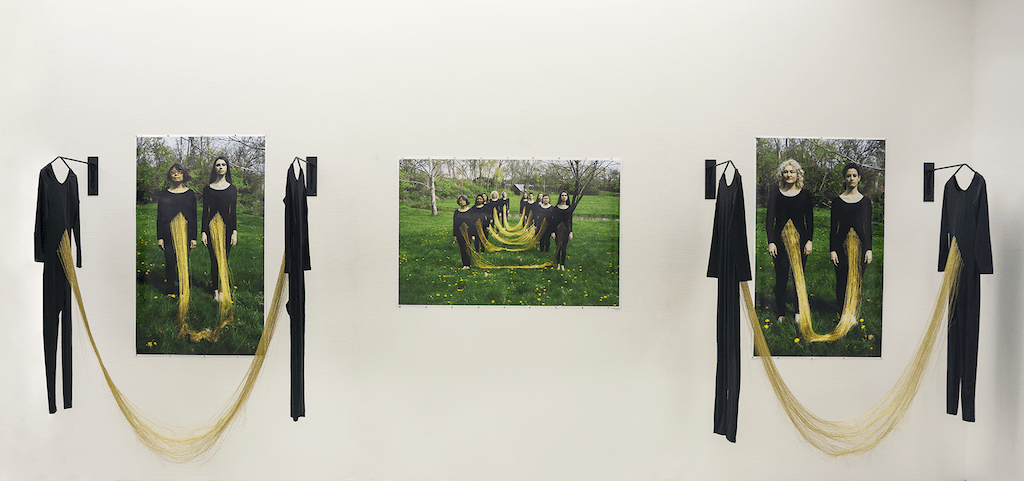
The power of mentors
TextileArtist.org: What initially attracted you to textiles as a medium? How was your imagination captured?
Brooks Harris Stevens: The history and use of textiles has always intrigued me from a very early age. By the young age of three, I was already captivated by the touch and feel of textiles—how they could make you feel warm, comforted and secure.
My journey with stitching began on scrap pieces of fabric my mother gave me. Neither she, nor any living person in my family worked with textiles, so I learned through trial and error until I was old enough to take classes in school.
My earliest creations were coloring patterns onto fabric with Crayola Crayons and then crudely hand-stitching the fabric together to make a pillow, doll clothing or something simple like that.
Often, I’d learn from a friend or kit I received as a present, and those things kept my curiosity as I was always interested in making something with a new technique.
The options of materials and ways to manipulate them into clothing, sculpture or a utilitarian object were endless, and I found them all to be quite magical. How many things in our world can do that?
It wasn’t until I reached high school that I learned how to use a pattern to create something specific like a dress, blouse or pants. My high school textiles teacher, Mrs. Richardson, recognized my interest and talent for sewing and was very encouraging. She was the first of many influential women that helped foster my interests and supported my path in the arts.
I also had a fantastic art teacher, Mr. Rankin, who was very well known and successful in North Carolina. He, too, saw something different in me, and he was extremely supportive of my aspirations to go to college for art.
At the time, I was keenly aware my art and textile classes were not offered in all public schools. So, I knew if it wasn’t for these key people, I would have had a more difficult time pursuing my life-long desire to become a professional artist.
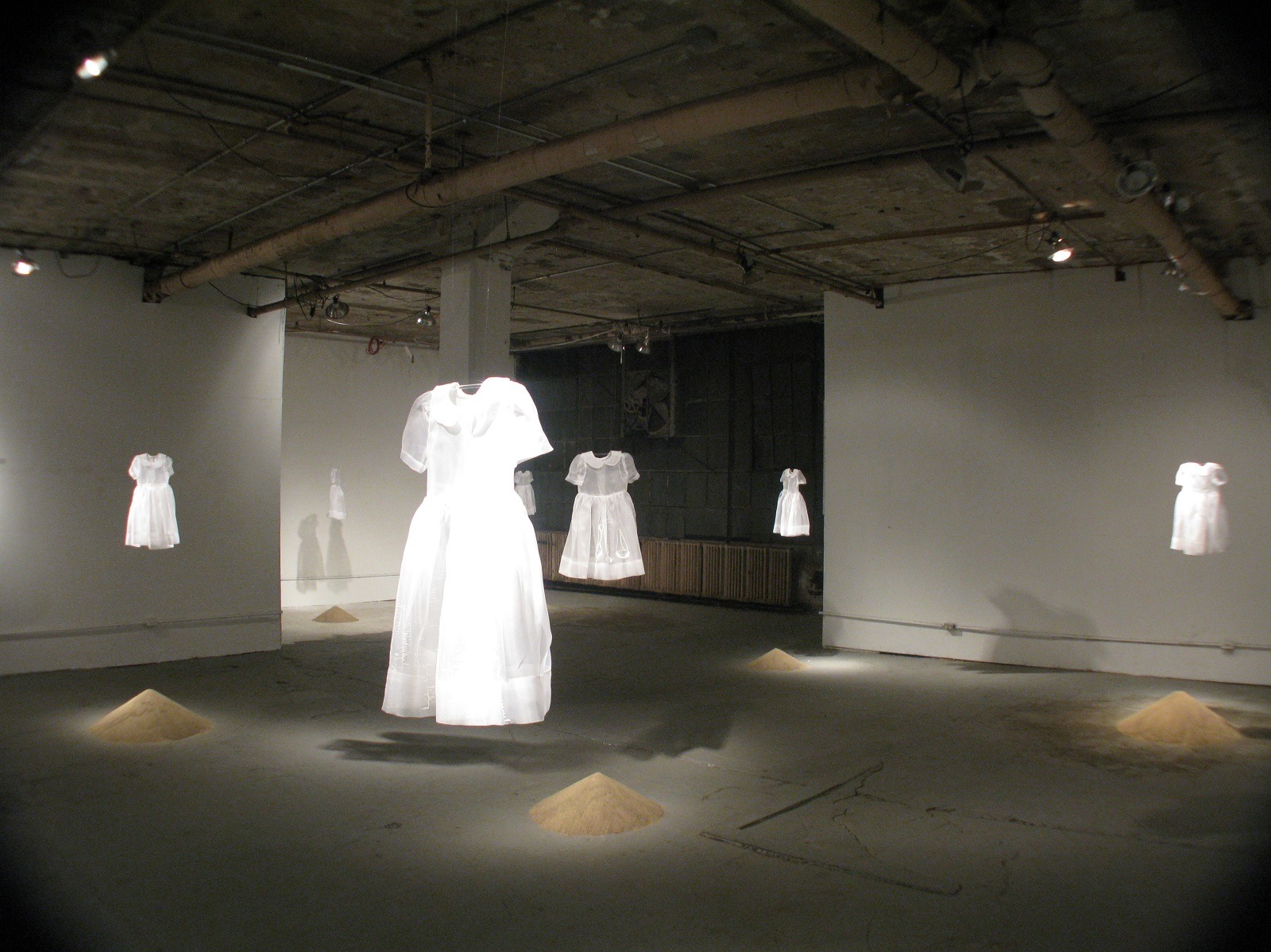
What or who were your early influences and how has your life/upbringing influenced your work?
Growing up in the capital city of Raleigh, North Carolina, I was exposed to performing and visual art as early as five years old. Every year we would take field-trips to the N.C. Museum of Art, see a ballet or dance performance or go to the orchestra.
Those experiences opened my eyes to see there was a world outside of medicine, business, agriculture, etc., and that art could be created by people fortunate enough to be professional artists.
I also discovered a poster hanging in Mr. Rankin’s art class for the Savannah College of Art & Design (SCAD) in Savannah, Georgia. It was a magical school focusing solely on ART!
Thrilled with excitement, I took a card from the poster to request more information. This was before the Internet or email, so one corresponded through letters or telephone calls. (And telephones were mounted on the kitchen wall.)
My saving grace in getting into SCAD was the fact they didn’t only accept students based on SAT tests or one’s grade point average. Instead, they mostly based acceptance on talent and recommendations. (But I did ultimately excel and graduated with honors.)
Pursuing both a BFA and MFA in Fibers/Textiles allowed me to learn all I could about this world. I was able to develop a specific admiration, curiosity, desire and understanding of the field and ultimately of myself. I did explore other art forms such as metalsmithing and sculpture, but they were just another way for me to look at creating or using fibers/textiles in my work.
The coursework also introduced me to several strong female professors who have remained inspirational mentors.
The extraordinarily talented and wise Professor Pamela Wiley taught a course on Embellished Surfaces. And in many ways, that class was a game changer. I was able to see how my interests in sewing combined with using many other types of fibers could produce artwork that reflected me and my creative voice.
My upper level studios taught by Professor Pamela Wiley and Professor Deborah First also had a great impact upon me. They were filled with self-directed work of my design allowing me to develop my own visual language. These two women helped guide and show me a world I had only dreamed about, and for that, I am eternally grateful.

What was your route to becoming an artist?
My creativity and passion has been a constant staple in my life, and I have also remained persistent and true to myself.
During graduate school at East Carolina University – School of Art & Design, I found my interest and desire to teach. At first, I taught Art Foundations focusing on Two- and Three-Dimensional Design, and then I quickly moved into teaching an Introduction to Fibers course and Weaving.
Every semester I applied for Graduate Assistantship funding, which really gave me an advantage when I applied for teaching jobs. I have been teaching since 1998, and I have learned just as much as my students.
I have also had many residency opportunities to teach, take classes and create my own work, including Arrowmont School of Art and Craft, POLIS Universiti in Tirana, Albania.
All of these experiences enabled me to meet new people from all over the world, exchange ideas, learn new techniques and create in a carefree environment.
My first experience exhibiting my artwork was during my time at SCAD. After that, I began to enter juried exhibitions which was as exhilirating then as it is today. The first large juried Fibers/Textile exhibition I got into was in Chataqua, New York back in 1995, and it produced a catalogue to go along with the exhibition. That was so exciting to me and definitely a long-term memory.
It was then I determined I was truly an ‘artist.’ But upon reflection, I think I really became an artist back when I was sewing at age three. I knew then, just as I know now, this is what I am and what I do. I do not have a choice.
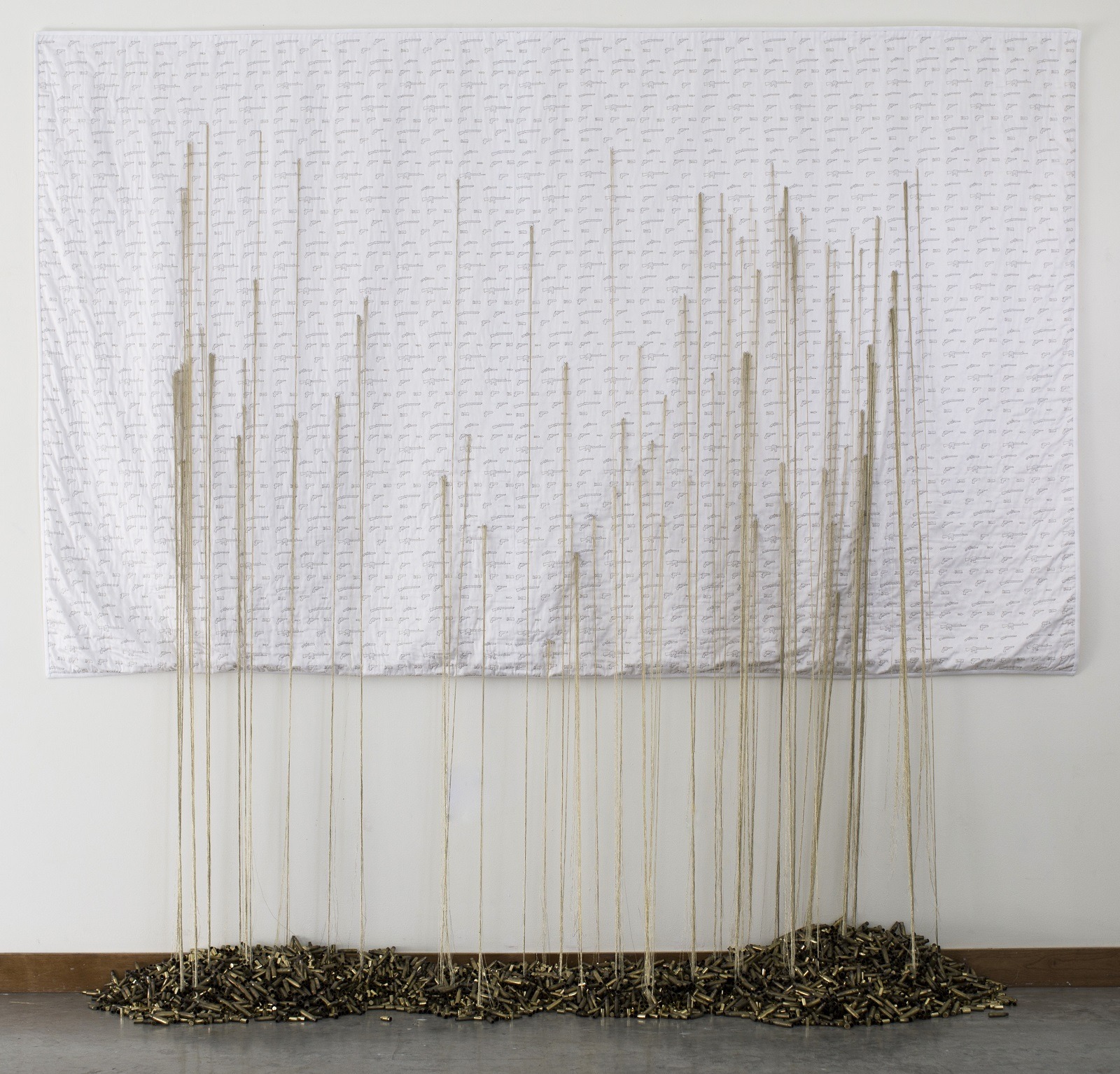
Mending and metaphor
Tell us about your process from conception to creation
I have always been inspired by familial relationships, as well as our human experiences with textiles.
Inspiration usually begins with imagining a finished piece or several pieces. I realize this is backwards from how most people begin creating work, but it is something I learned to work with since high school.
From that point, I start to meditate on the visual of the artwork, working to dissect it and figure out the best way to go about constructing the work, including what materials are needed and what techniques to use.
I then gather the materials needed and test them out making small maquettes or technique samples to see how things will work. While most of the information is in my mind, I do allow intuition to also take hold and make any alterations if needed.
Because my work is also concept driven, I depend upon the concept to help determine what materials I use. Then the materials guide me to the best technique to use.
My use of a single gold thread was partially inspired by my travels to Albania and my admiration of the beautiful embroidery used on their traditional clothing. In many cultures, the use of gold metal, paint or thread is used to show value or increased meaning. So, that’s why gold seems most appropriate to use for the mending I use in my artwork. It is a material that shows value across the world and is something almost everyone understands.
Mending becomes a metaphor in many ways as seen in Mending Gold: Careful Attention where I examine the worn areas on used textiles and highlight them with the gold threads.
Also, the Mending Gold: When Will It Be Enough? piece uses gold as a metaphor. The work examines the United States’s gun violence problem and the need to ‘mend’ and change the gun culture and mass murder of innocent lives in America. There is no actual mending or darning that is stitched into this piece. It is a quilt, and gold is used as a metaphor and one that asks a larger question of the viewer.
I find when creating work that uses many textile processes such as stitching, tufting/needle punch, weaving and the like, I escape into those repetitious acts as a form of meditation to help me make sure I am thinking clearly. Everything has to make sense, and no randomness of material or technique will find itself in my artwork. This meditiation allows me to have a clear focus and idea as to what a piece will look like in the end within a gallery or museum, and most importantly, the message it carries.
I have always failed at keeping a consistent sketchbook, and I have tried a few things to take its place, such as creating small maquettes or technique investigations that are tangible. But I learn and remember more by the touch and experience I have with materials.
However, I have been making small paintings and drawings in between ending and beginning a new piece. And I have begun to appreciate them and find value in making them, as well as including them in exhibitions.
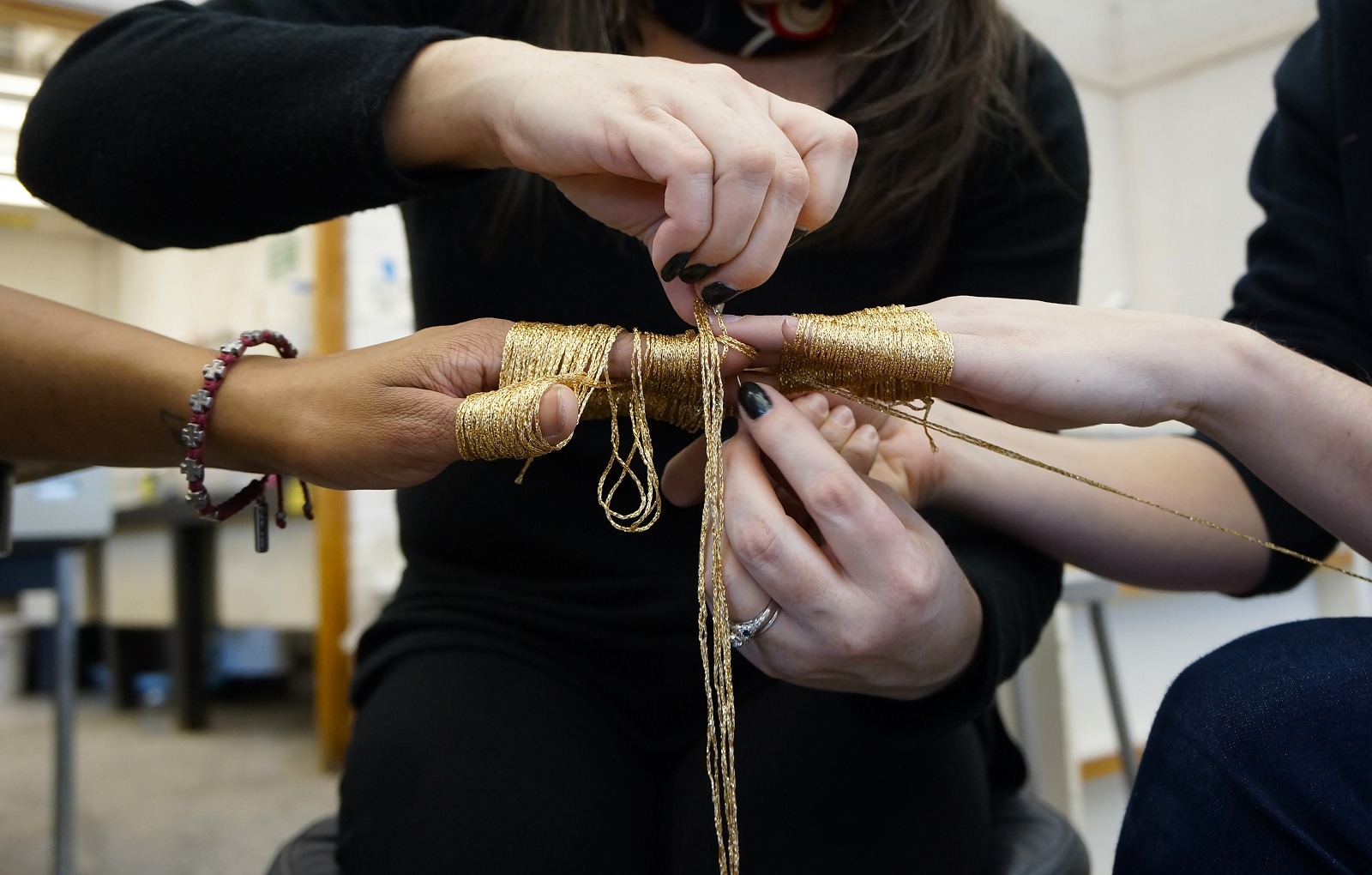
Tell us a bit about your chosen techniques and how you use them
The techniques that I use vary depending on the need of the concept of the piece, so I don’t stick with one chosen technique.
The Mending Gold series of work started back in 2008 and went full force in 2015 when I was on sabbatical at my university.
The act of mending, the need to mend, the need to help, the need to fix a problem are all things I see that need to happen in our world. These thoughts, actions and process are things that bring me calm and are ways I can envision how I can help.
I am attracted to materials that have been used, as they are reflective of the person’s life or how land has been used to show the worn areas within the landscape. They are unique marks that are not prescribed. They are original and truly show an honest mark.
When mending any surface, I respond to the marks that were made by a person or persons. I particularly like to find textiles at vintage or second-hand stores, as they are items that have a history to them. I find a connection with things that have a history, because history often gives you a clearer perspective, and we really need that now.
My darning techniques depend on the material. For example, if I’m mending a men’s blue shirt collar, I use more traditional darning techniques. In contrast, when I’m landscape mending, I am solely using the gold thread to highlight the worn area and it does not involve the use of stitching.
I was introduced to the needle punch and tufting gun at the same time and was completely enthralled with both because of the type of dimension I can achieve on the material’s surface. I saw a few other artists using them and found a company in the U.S. that sold the electric tufting gun. I purchased that and the hand punch needle on the same day!
I became more aquainted with the tufting gun first, because I was introducing it into some of my Fibers courses at my old university. That is when it all exploded for me.
I learned through trial and error, watching Youtube videos and asking other artists to help me figure out how to use the tools. I have mentioned before I enjoy repetitive acts, and both tools give me a lot of that. There are lots of loops, and I like the ability to change colors and mix a multitude of yarn finishes while creating something that is abstract or more representational.
Since I prefer to work with multiples of a same/similar object or shape, I also like the ability to have a more complex surface. An example of this can be found in Mending Moss, a piece inspired by abandoned city buildings that were losing some of the bricks, and as a result, moss and grass were growing in those missing areas. This was inspirational to me and one that fit quite well with my Mending Gold series.
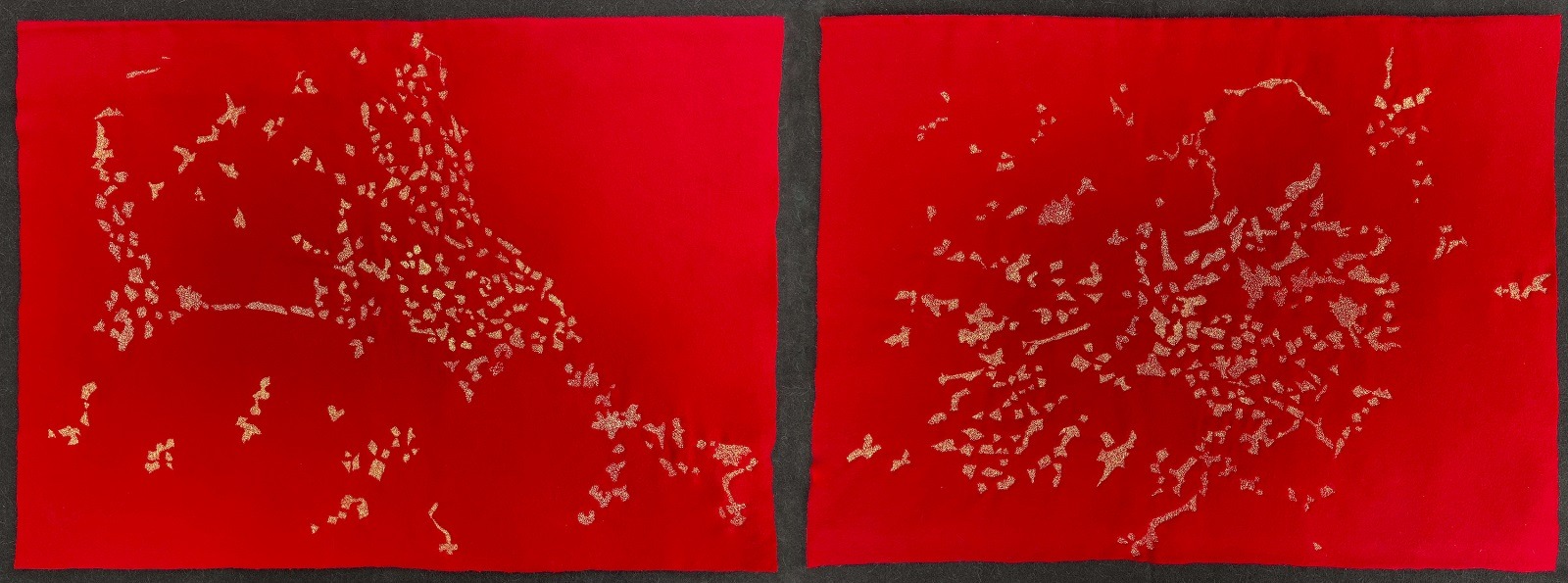
What currently inspires you?
Currently, I am inspired by several strong women who were a part of my family. These women—grandmothers and great aunts—have left me such wonderful and vivid memories. These memories include wall-to-wall pink bathrooms with shag carpet, vintage carpet bag purses and swimming caps from the 1960’s. These are good memories for me in which I really find peace and some happiness.
With all of the political unrest we have been experiencing in the United States, I have decided to take a short rest from some of my mending work. I believe since I sit at a point of privilege because of my race and socioeconomic standing, I must listen and help those who need it instead of producing work that benefits from others that are not as privileged. I have been donating to different causes, volunteering with different organizations, making sure others are registered to vote and working the voting polls to make a difference in my community.
I will return to the Mending Gold work soon enough, but will explore some of the work that has been inspired by some of the strong women in my family in the meantime. These works involve a great deal of needle punch and tufting to achieve the looks I desire.
I recently did a tiny test with the needle punch to create a super fluffy pink tufted circle. I’m thinking about using loads of pink shag carpet to encapsulate viewers and take them on a nostalgic sensory experience that plays with scale, as well.
I have many, many other pieces in the works, but you will have to watch me as they progress either on my website or social media!
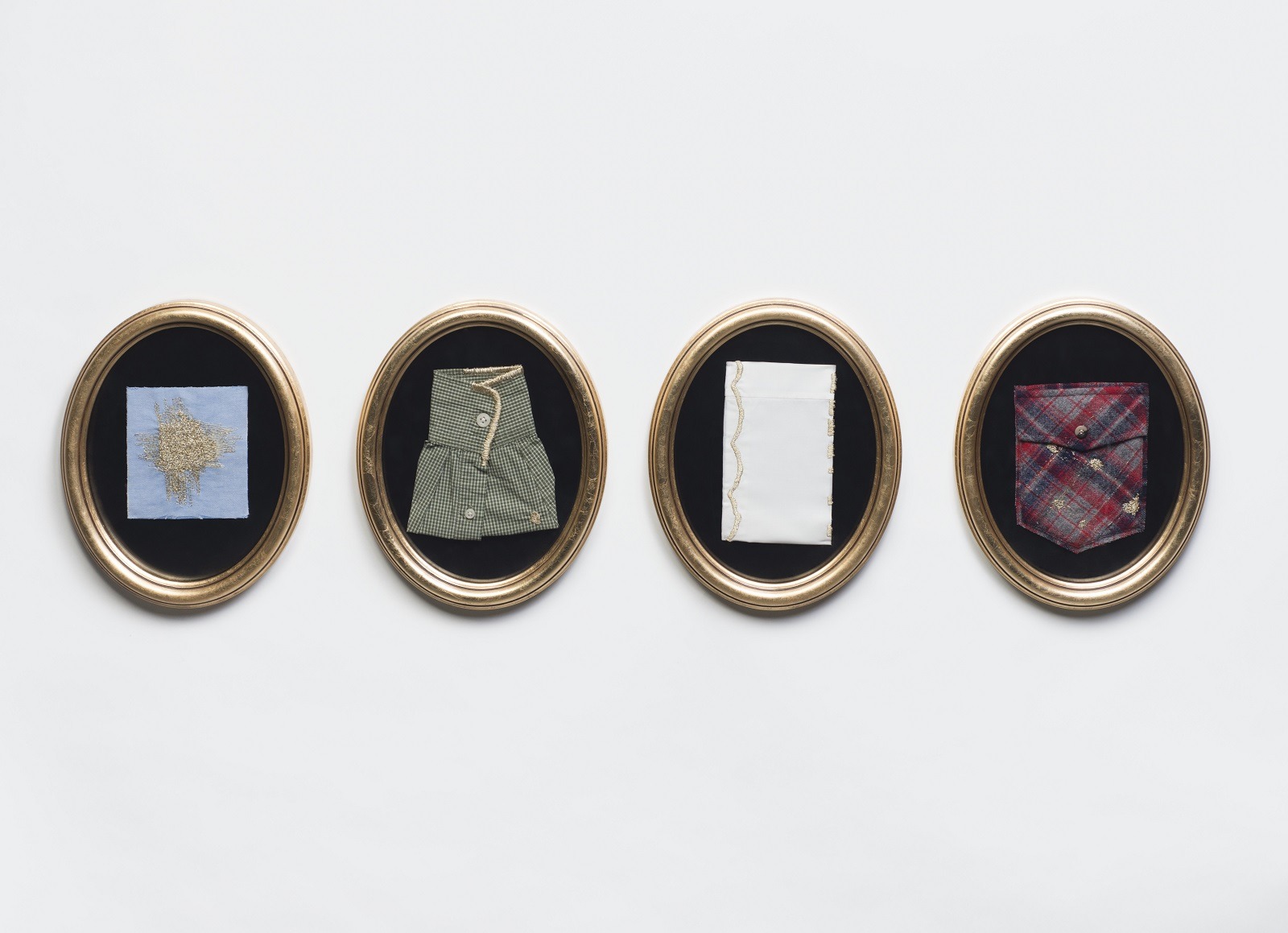
Stitching toward global awareness
Tell us about a piece of your work that holds particularly fond memories and why?
Mending Gold: Careful Attention was the first piece in my Mending Gold series and was the beginning of realizing that entire body of work. It has led me on unexpected adventures in travel and connection to places and people. It also pushed me as an artist.
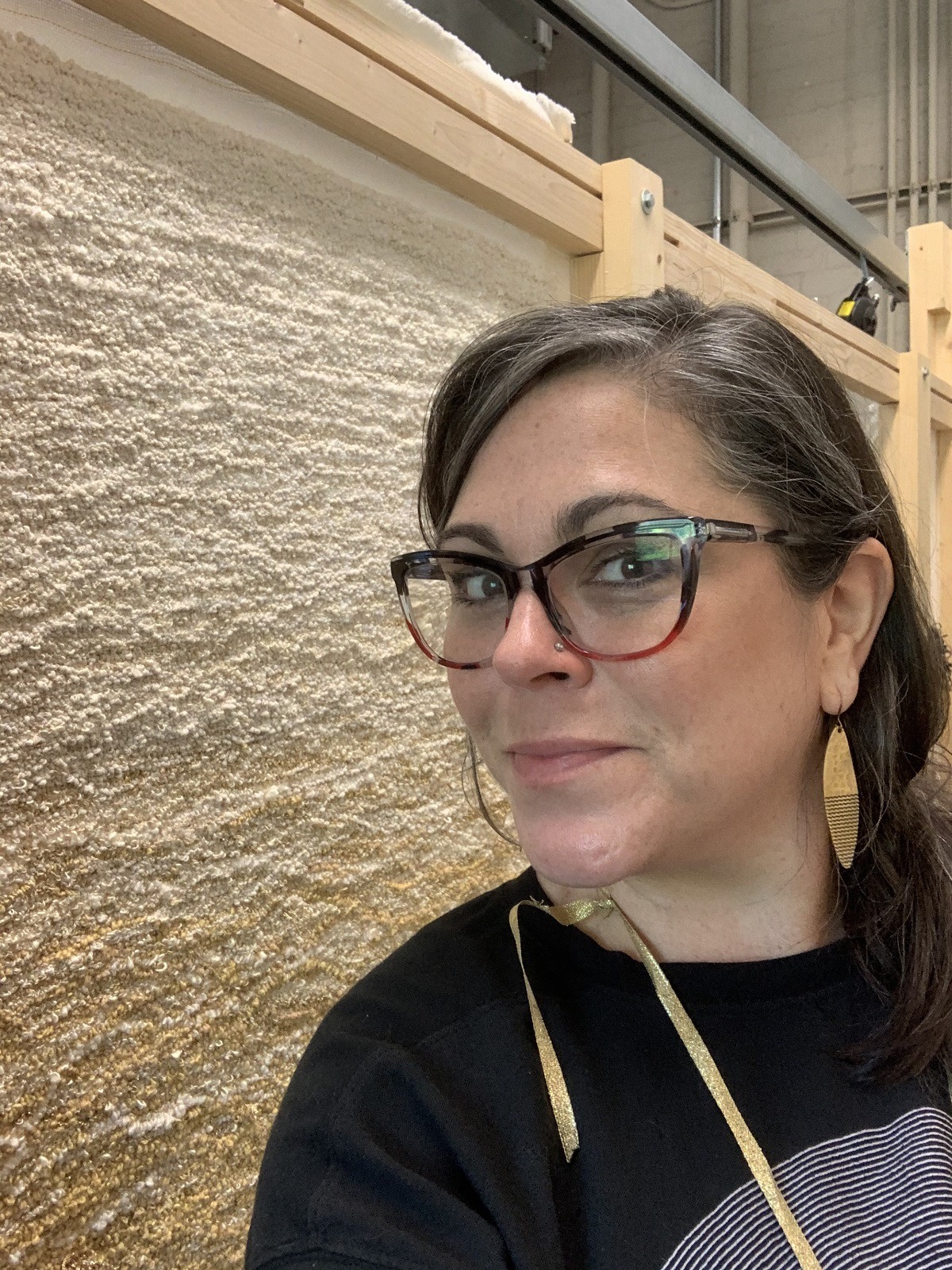
How has your work developed since you began and how do you see it evolving in the future?
My work has continually evolved as I have grown and evolved as a person. The mending series pushed me in such a way that I looked outward for inspiration, not just through memories from my past.
This really helped me develop interest in other cultures and to travel more to experience other cultures and see how our world works with a wider perspective. As an American, I miss the history that is steeped in so many other cultures. We don’t have as much as some other cultures, or at least I didn’t within my family growing up. So, I decided to search for them.
The rituals we go through from season to season are connected to different religions, places and people and have expanded my point of view to understand and not judge, to celebrate rather than hide. Exploring history that is either my own or found through the history of textiles really makes sense to me. I love that connection and know there is a lot between the links, loops or weaving of all of these things together to help me understand the world.
I look forward to continuing to create work that is guided by my intuition and interest in textiles and understanding of the world.
For more information visit www.brooksharrisstevensart.com and on Instagram
What are your own experiences with mending and repair? Do you use it in your textile art? Let us know below
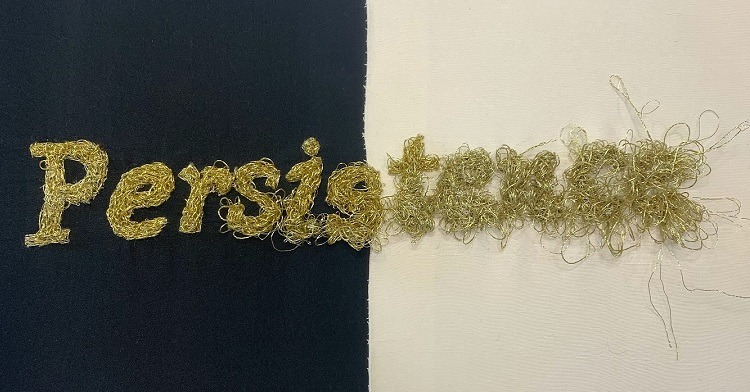

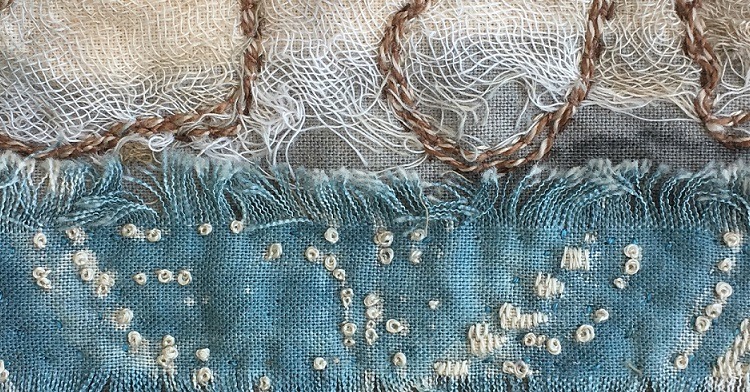
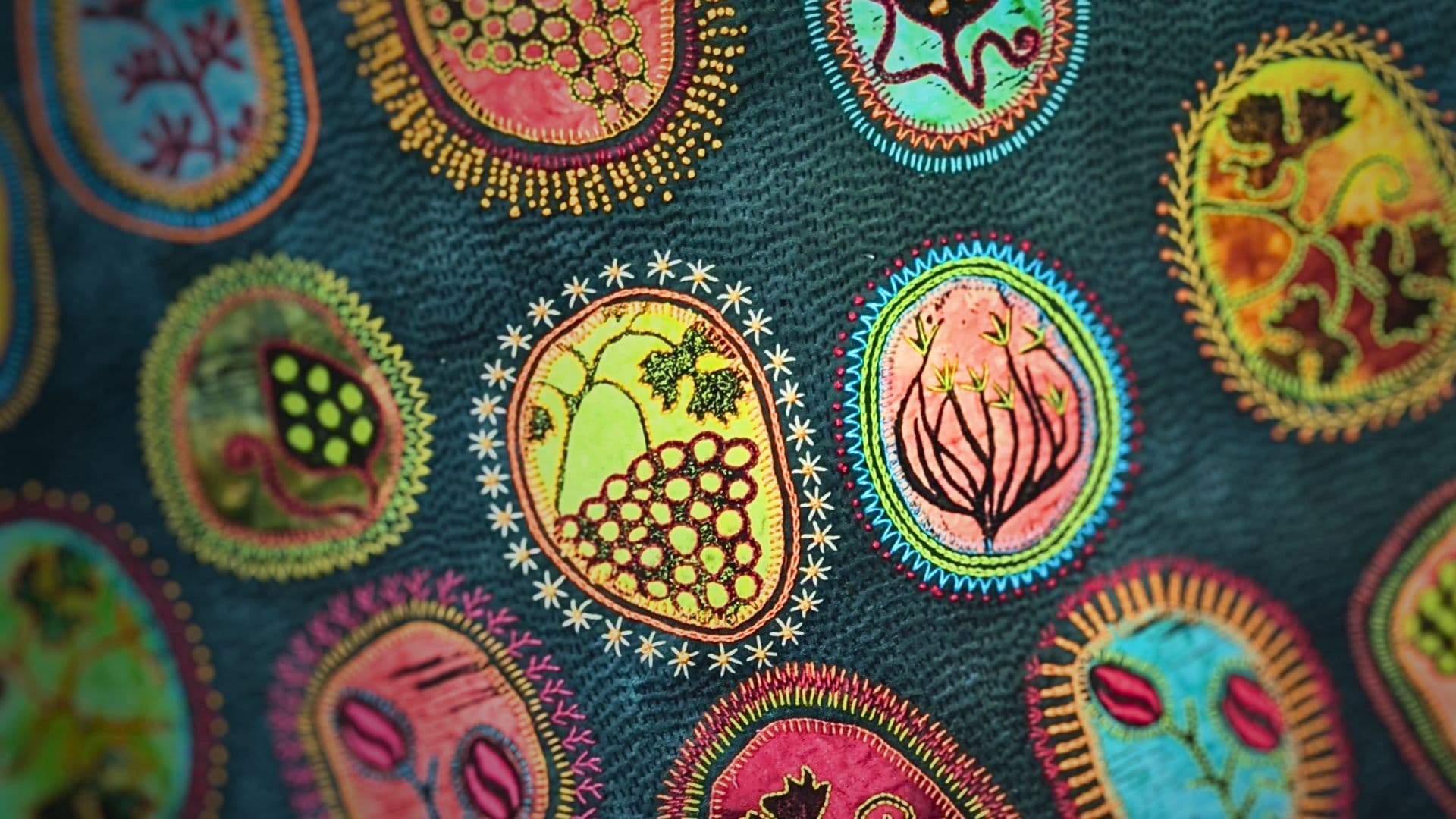
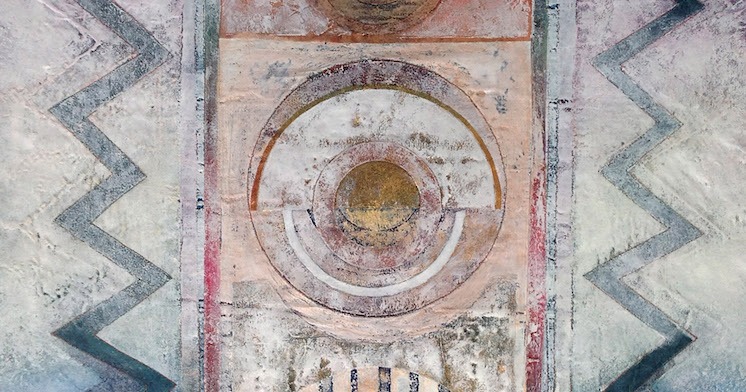
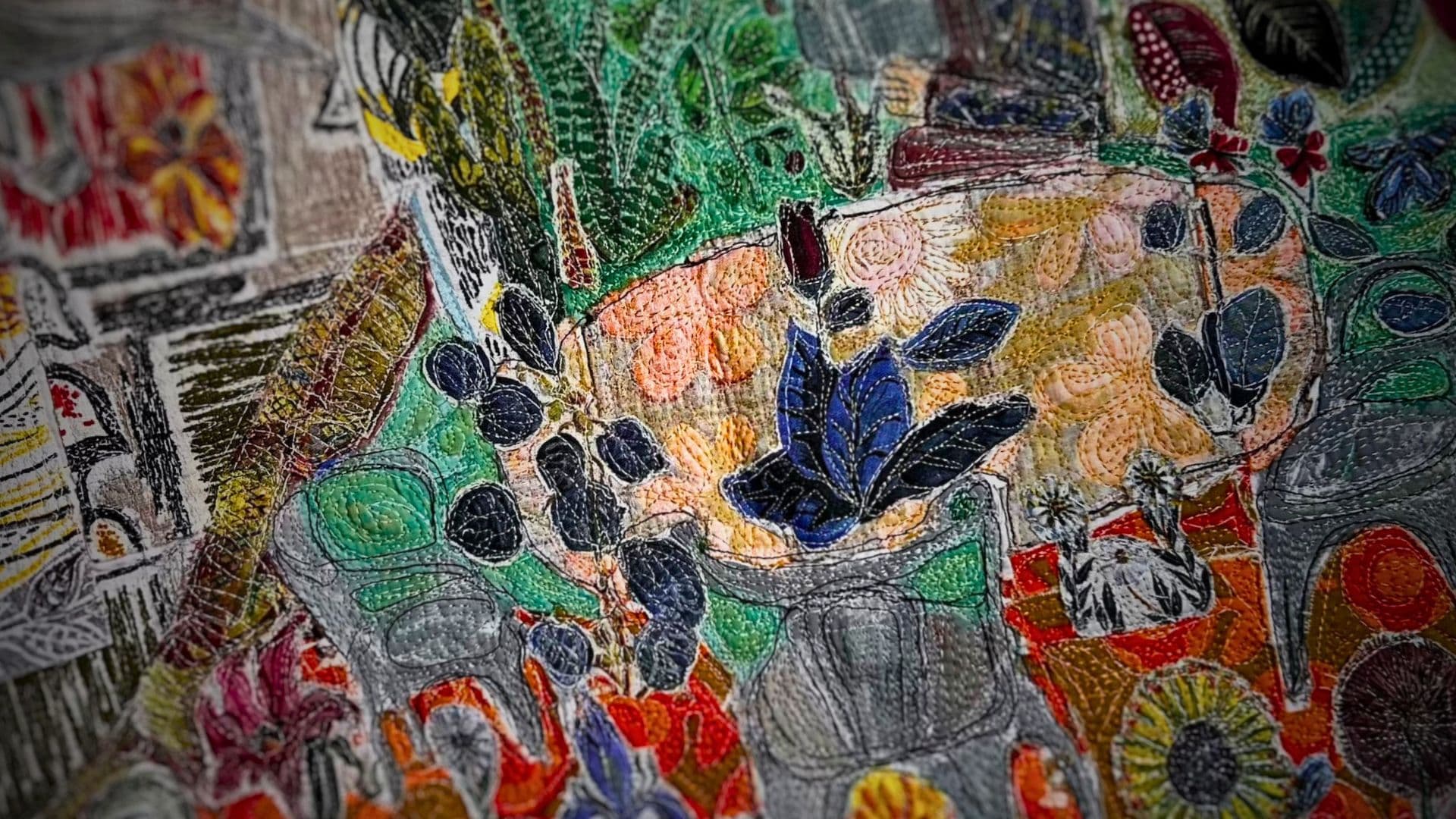
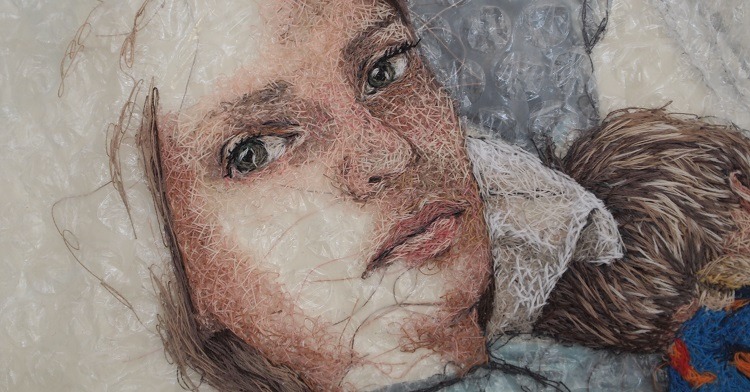
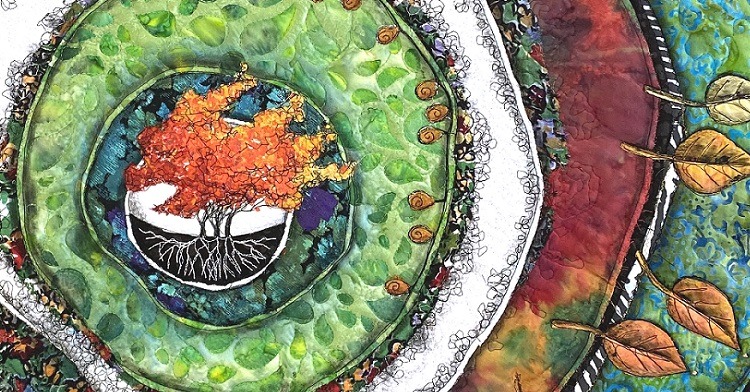
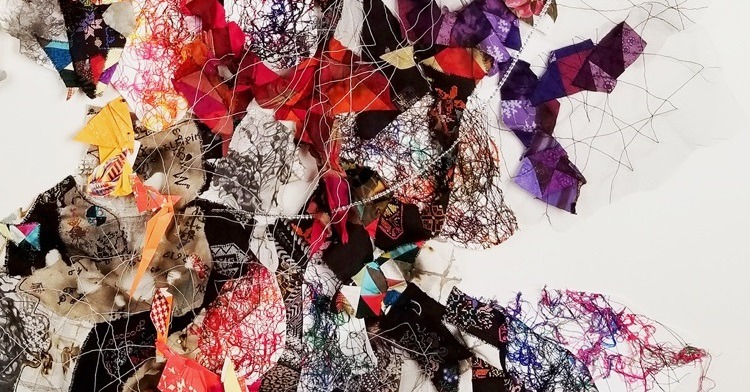
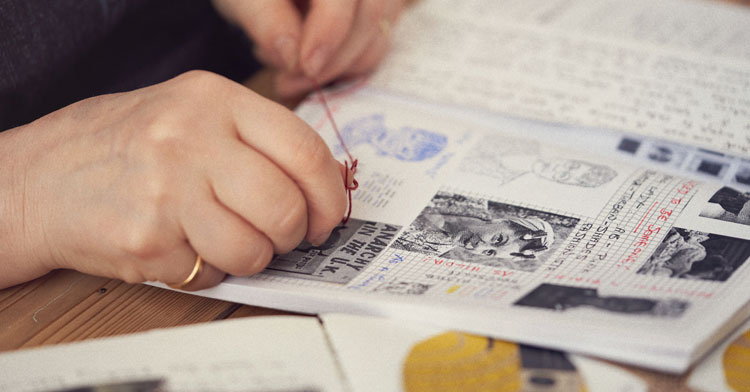
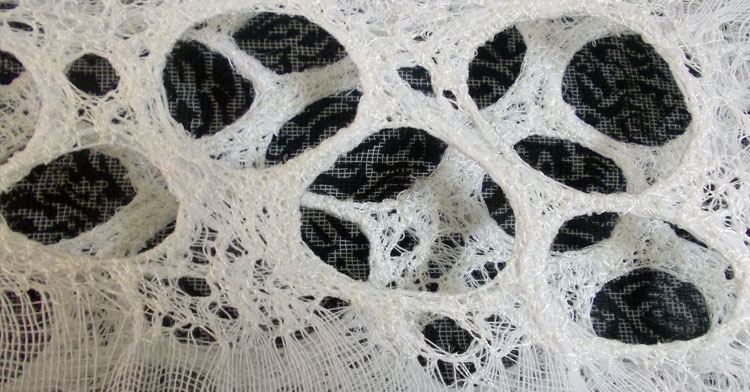
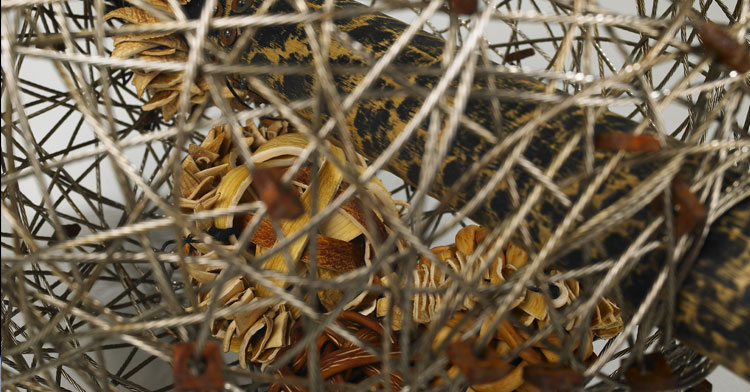
3 comments
Patty Marchionno
I am amazed reading your story. I would love to be able to meet you someday. I have been on fire with learning and creating with textiles . Embroidery and felting- my new love. This sort of explosion happened when I retired .I can’t do enough. Every creation i make I push to learn many techniques. My husband can’t quite understand my energy . I don’t understand it either, but know im in love with creating. So happy to see someone else has a similar experience. But you have gone soooo far so quickly it seems.
Jane
I love mending with my embroidery, felting and beading materials. Especially patching jeans. Love this – well done!
Jean Hess
Question:
Is this the avenue for sending you my notes and images on mending? I do want to participate!